2022
Excerpts from the handbook published by the Rudolf Steiner School in Munich-Schwabing
How it all began, what inspired us (and still does)
A passionate repairer, Walter Kraus, math and physics teacher at the Rudolf Steiner School in Munich-Schwabing, came across The Culture of Repair, [a book] by Wolfgang M. Heckl. Heckl writes of an idea attributed to Martine Postma, an Amsterdam journalist concerned about the environment and sustainability. Postma imagined laypeople and volunteer experts gathering to repair broken objects in a relaxed atmosphere over coffee and cake. Her Repair Café was the first of what’s become a vast movement – Repair Cafés and similarly formatted community repair events have swept the globe.
Why couldn't an idea like this be transferred to a school setting?
The “Repair Café” concept was then adapted to fit the needs of the Munich Waldorf School. Since April of 2016, the“Student Repair Shop” has been an elective for the ninth and tenth grades, for grades five through eight at the day-school, and in Technology Education class in the 11th grade. So, twice a week, the twelve students in each of these classes have the opportunity to repair things. This makes the Rudolf Steiner School in Munich the first primary school in the world to offer repair classes. Supervised by experienced tinkerers (volunteers from the community), students in these classes repair objects and devices of all kinds. In publishing this handbook, we intend to share our experience and offer guidance to educators interested in repair, with the hope that this highly successful teaching practice is widely adopted.
The Student Repair Shop at Munich’s Rudolf-Steiner School stands out for these reasons:
Rather than taking place in “safe mode”, real customers bring real objects to be repaired.
Students shape the entire process on their own: They speak with clients and are responsible, at least initially, for finding out what is wrong, and for doing any research required, on the internet or using other sources (e.g the instructions for use that came with the object). The whole time they are applying discovery- and experiential-oriented methods of working and learning (see “The special methodology of the Student Repair Shop”, below).
Students decide for themselves whether or not they need help, which they would then actively seek.
They are also responsible for their own internal organization and for deciding which team takes on which repairs.
Involving volunteer repair instructors is an integral part of the program; doing so allows students to learn work and share intergenerational experiences with “outsiders”; they do not simply orient themselves on the teacher alone.
Unlike the usual practice in repair cafés, objects to be repaired do not have to be taken home at the end of “repair sessions”. The objects can stay in the workshop as long as necessary for any parts that may be needed to be procured, and students keep customers informed accordingly.
The Student Repair Shop is intentionally organized not to be a profitable enterprise. It is much more about putting oneself in the service of others, without expecting material reward. The “reward” comes exclusively from the successful repair and from the satisfaction of having done something for someone else – and having learned a lot in the process.
Using the Internet as a source of information and as a channel for communication (e.g. with manufacturers and suppliers) gives students the opportunity to recognize the Internet as a resource, rather than simply using it as a means of entertainment.
For more information and to download the handbook, go to Fixing Things for the Future.
Wolfgang M. Heckl’s book, Die Kultur der Reparatur (The Culture of Repair), is unrelated to The Culture of Repair Project.


